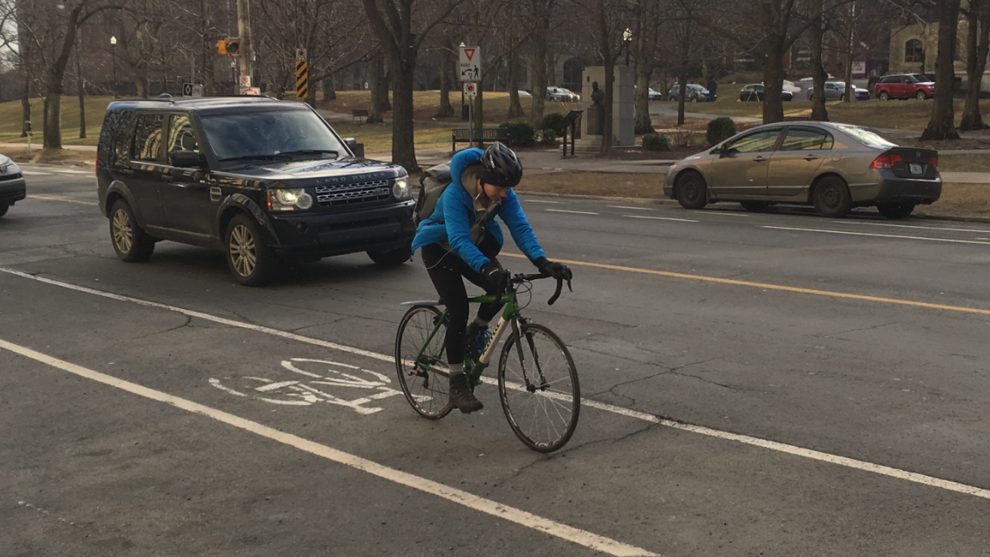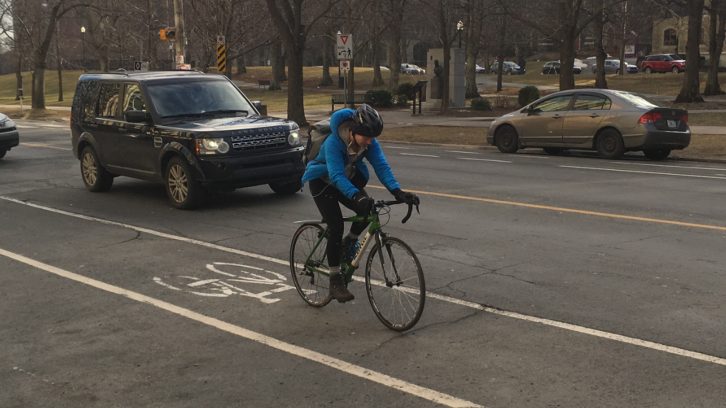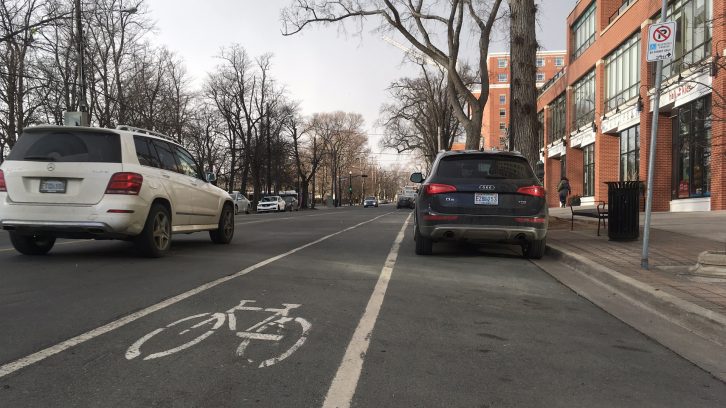Cycling
Halifax engagement session on bike lanes rolls along smoothly
Halifax Regional Municipality looks for input on developments for South Park Street

caption
Cyclists travelling on South Park St. may soon be in for a safer ride
caption
Cyclists travelling on South Park Street may soon be in for a safer ride.Creating a bike friendly municipality is a growing concern for many Haligonians and on Tuesday night, residents offered their opinions on new development ideas.
In 2016, Halifax Regional Police recorded 238 vehicle, pedestrian and bicycle collisions. Cyclists were involved in 55 of these accidents.
With safety in mind, city planning officials met with citizens at the Halifax Central Library to discuss bike lane improvement proposals for South Park Street.
At the engagement session, city planner Mark Nener described the regional plan for the Halifax Regional Municipality, which is “to design complete streets for all ages, abilities and modes of travel.”
Nener said the South Park project is part of “several council approved plans” which will form a network of bike routes throughout the Halifax peninsula.
“South Park has the potential to eventually connect the North End to some important destinations mid-peninsula and in the South End,” said Nener, pointing to universities, hospitals, commercial areas and dense residential zones that will one day be linked together through bike lanes.
Traffic engineer Mike Connors led the meeting and outlined three different bike lane options.
Each plan involves lengthening the existing bike lane from Sackville Street to Inglis Street, but they all contain different features.
In his presentation, Connors explained the first option would create a “painted buffer,” between parked cars and bike lanes so as to avoid “dooring” cyclists.

caption
The existing bike lane leaves little room for cyclists.Other features include extending bike lanes up to intersections and changing or removing some motor vehicle turning lanes.
Of the three options, this first one would be the most cost effective choice, yet it was met with little enthusiasm from the crowd.
In the subsequent question and answer segment, one attendee voiced her concern saying this option “doesn’t do enough to protect cyclists.”
Connors admitted the existing bike lane is not “an overly inviting bicycle facility.”
The second option aims to create a safe space for cyclists by adding physical barriers, like bollards, curbs, or planter boxes, to separate bikes from cars.
Connors said this option provides “insulation” between cyclists and traffic which would make both feel “more comfortable.”
The third option Connors described also offers protected bike lanes, but adds “off-street” variations.
That means from Sackville Street to Spring Garden Road, or even down to University Avenue, the south-bound bike lane would be moved in between the curb and sidewalk next to the Public Gardens, forming a trail parallel to the road.
Cyclists in the room favoured the last two proposals, as did members of the local business community.
Rachel Brown, communications and events coordinator for the Spring Garden Area Business Association, said “the safety of pedestrians and cyclists are always a huge concern.”
This is why she said prefers the third option, because it takes away the least amount of parking out of either proposal and provides pedestrians and cyclists alike “with a safe option.”
Cyclist Chris Bernard agreed as he said “safety is my main concern.”
For Bernard, a mix of bike lanes and off-street trails would strike the right balance between safety, parking and green development.
If the proposal is accepted, Bernard said “it’s probably going to spread to Dartmouth,” and will foster a green, bike friendly “diaspora” throughout the HRM.
For citizens who would like their ideas heard, but who were unable to attend the engagement session, a survey will be made available to the public at Shape Your City, on Feb. 1.


m
michael creagen